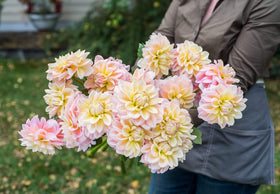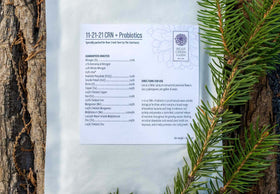In the world of dahlias, an occasional anomaly occurs that both perplexes and delights gardeners: the appearance of a sport. These unexpected and rare mutations, where a flower's characteristics deviate dramatically from its peers, are a testament to nature's whimsical artistry. Imagine tending to a garden of harmonious blooms, only to discover one singular dahlia, distinct in color, pattern, or form. This phenomenon is more than a mere curiosity; it is a dance with nature that involves the mysteries of genetic variation.
The Science and Serendipity of Dahlia Sports
A dahlia mutation, or sport, is a manifestation of genetic change within the plant's cells. Unlike the predictable and consistent blooms of a cultivar, a sport emerges from a spontaneous alteration in the plant's DNA. This can happen due to various factors—environmental stress, natural genetic variation, or even minor damage to the plant. It is a reminder that nature, despite its patterns and cycles, retains an element of unpredictability.
These mutations often occur in a localized part of the plant, such as a single branch or an individual flower. This means that while one bloom may display a new color, pattern, or shape, the rest of the plant continues to produce flowers in the original form. This localized change is known as a chimera, where the plant harbors two or more genetically distinct tissues.

Types of Sports
-
Color Variations: Sports can result in flowers with lighter, darker, or completely different colors than the original. This includes changes to pastel shades, bolder hues, or even entirely new colors not seen in the parent plant.
-
Pattern Changes: Some sports may develop new patterns, such as stripes, speckles, or variegation. These patterns can add a unique and striking appearance to the blooms.
-
Shape and Form: Besides color and pattern, sports can also affect the shape and form of the flowers. This might include changes in petal shape, flower size, or the overall form of the bloom.
-
Texture: Occasionally, sports can lead to changes in the texture of the petals, such as becoming more ruffled or smoother.

Cultivating the Unpredictable: Propagation of Dahlia Sports
For the avid gardener and breeder, the appearance of a sport is akin to discovering a hidden gem. The question then arises: how can we capture and perpetuate this unique beauty? The answer lies in careful propagation.
To preserve and replicate the sport, gardeners often take cuttings from the mutated part of the plant. These cuttings, when rooted and grown, have the potential to produce new plants that retain the distinctive traits of the sport. Similarly, if the mutation affects the tuberous root, it can be divided and replanted to see if the new plants carry the mutation.
However, the journey of stabilizing a sport is fraught with challenges. Not all mutations are stable, and some may revert to the original form over time. This reversion underscores the delicate balance of nature and the fleeting nature of these genetic surprises. Despite this, with meticulous selection and propagation, some sports can become stable, leading to the development of new and consistent dahlia varieties.
Nature's Whimsy and the Gardener's Craft
The occurrence of sports in dahlias is a profound reminder of nature's boundless creativity. It challenges us to embrace the unpredictable and to find joy in the unexpected. Each sport is a silent narrative of nature's adaptability and the intricate dance of genetic variation.
For gardeners, the process of nurturing these unique mutations is both an art and a science. It requires patience, observation, and a deep appreciation for the subtleties of plant genetics. In the end, cultivating dahlia sports is a testament to our desire to harmonize with nature's rhythms and to celebrate the extraordinary within the ordinary.
In your garden, should you be fortunate enough to discover a dahlia sport, consider it a gift from nature—a brief glimpse into the vast and intricate tapestry of life. Embrace it, nurture it, and let it remind you of the endless possibilities that lie within the natural world.





This was a very beautiful and inspiring read. Thank you for the endless possibilities of gardening and creativity.
I’m consistently blown away buy the quality of your writing. What lovely words. I always look forward to your posts. Thank you for sharing.
Don’t know if previous comment got sent. Two years ago I got some strange tuber from you instead of Vassio Meggos. You sent me a replacement last year. I now recognize Vassio Togas as quite closely resembling that mystery plant. Seems I had a sport in a tuber. Had I known about this I would have continued to cultivate it.